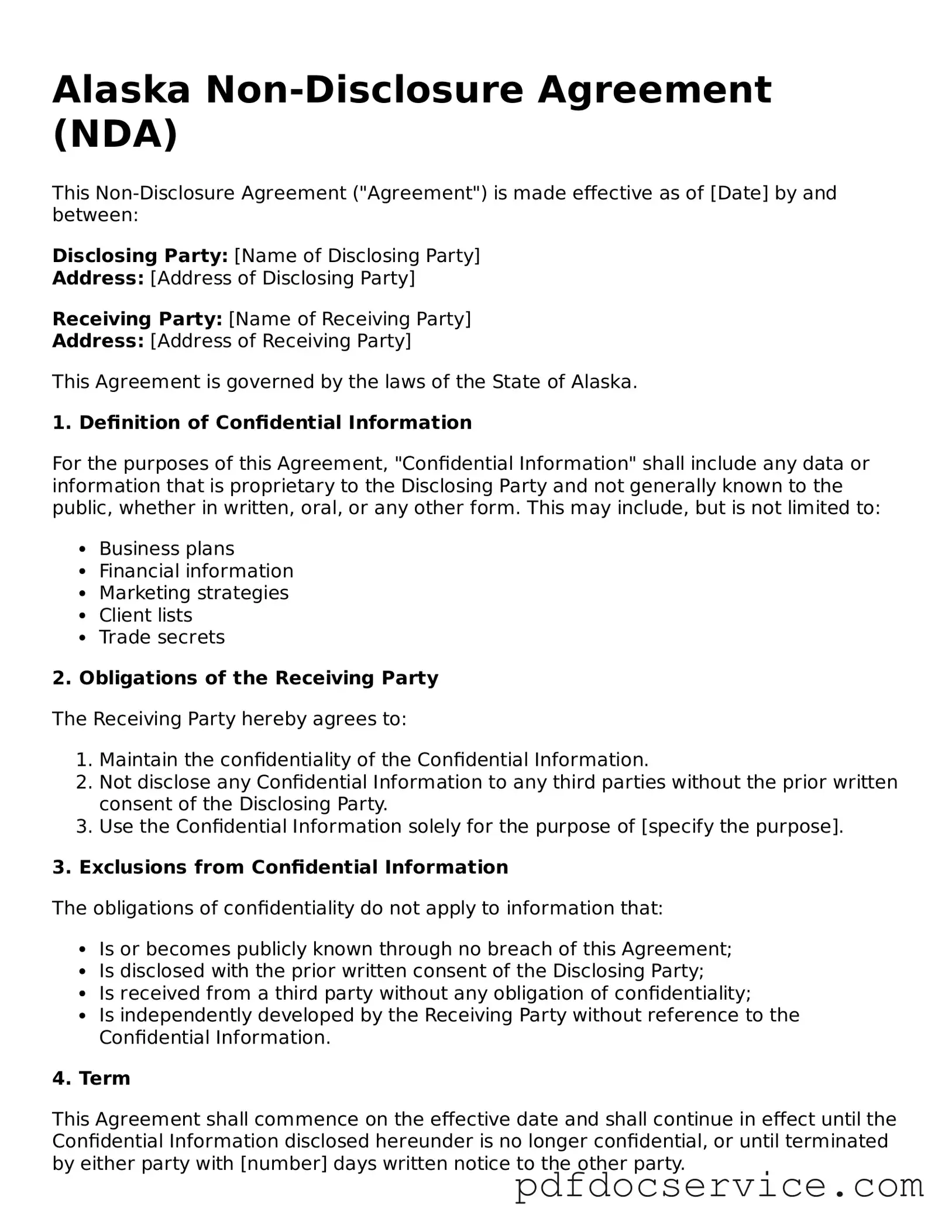What is an Alaska Non-disclosure Agreement (NDA)?
An Alaska Non-disclosure Agreement is a legal contract designed to protect confidential information shared between parties. It ensures that sensitive information, such as business plans, trade secrets, or proprietary data, remains confidential and is not disclosed to unauthorized individuals or entities.
Who should use an NDA in Alaska?
Any individual or business that intends to share confidential information with another party should consider using an NDA. This includes:
-
Business owners sharing trade secrets with employees or contractors.
-
Companies discussing potential partnerships or joint ventures.
-
Inventors revealing ideas to potential investors or manufacturers.
What are the key components of an Alaska NDA?
An effective NDA typically includes the following components:
-
Definition of Confidential Information:
Clearly outlines what information is considered confidential.
-
Obligations of the Receiving Party:
Specifies the responsibilities of the party receiving the confidential information.
-
Term of Agreement:
States how long the NDA will remain in effect.
-
Exclusions from Confidential Information:
Identifies information that is not covered by the NDA.
-
Consequences of Breach:
Details the penalties for violating the agreement.
How long does an NDA last in Alaska?
The duration of an NDA can vary based on the agreement between the parties. Generally, NDAs can last anywhere from a few months to several years. It is crucial to specify the term in the NDA itself to avoid any confusion later on.
Can an NDA be enforced in Alaska?
Yes, an NDA can be enforced in Alaska, provided it is properly drafted and complies with state laws. If a breach occurs, the injured party may seek legal remedies, including monetary damages or injunctive relief, to prevent further disclosure.
What happens if someone breaches an NDA?
If a party breaches an NDA, the injured party may take legal action. Possible consequences include:
-
Seeking damages for any losses incurred due to the breach.
-
Requesting a court order to prevent further disclosure of confidential information.
-
Potentially recovering attorney fees if the NDA includes a provision for this.
Is it necessary to have a lawyer draft an NDA?
While it is possible to create a simple NDA without legal assistance, it is highly advisable to consult with a lawyer. A legal professional can ensure that the NDA is comprehensive, enforceable, and tailored to your specific needs.
Can an NDA be modified after it is signed?
Yes, an NDA can be modified after it is signed, but both parties must agree to the changes. It is important to document any modifications in writing and have both parties sign the amended agreement to ensure clarity and enforceability.
If you need to disclose information protected by an NDA, review the agreement first. Check for any clauses that allow for disclosure under specific circumstances, such as legal requirements or with prior consent from the other party. If in doubt, consult with a legal professional before proceeding.
